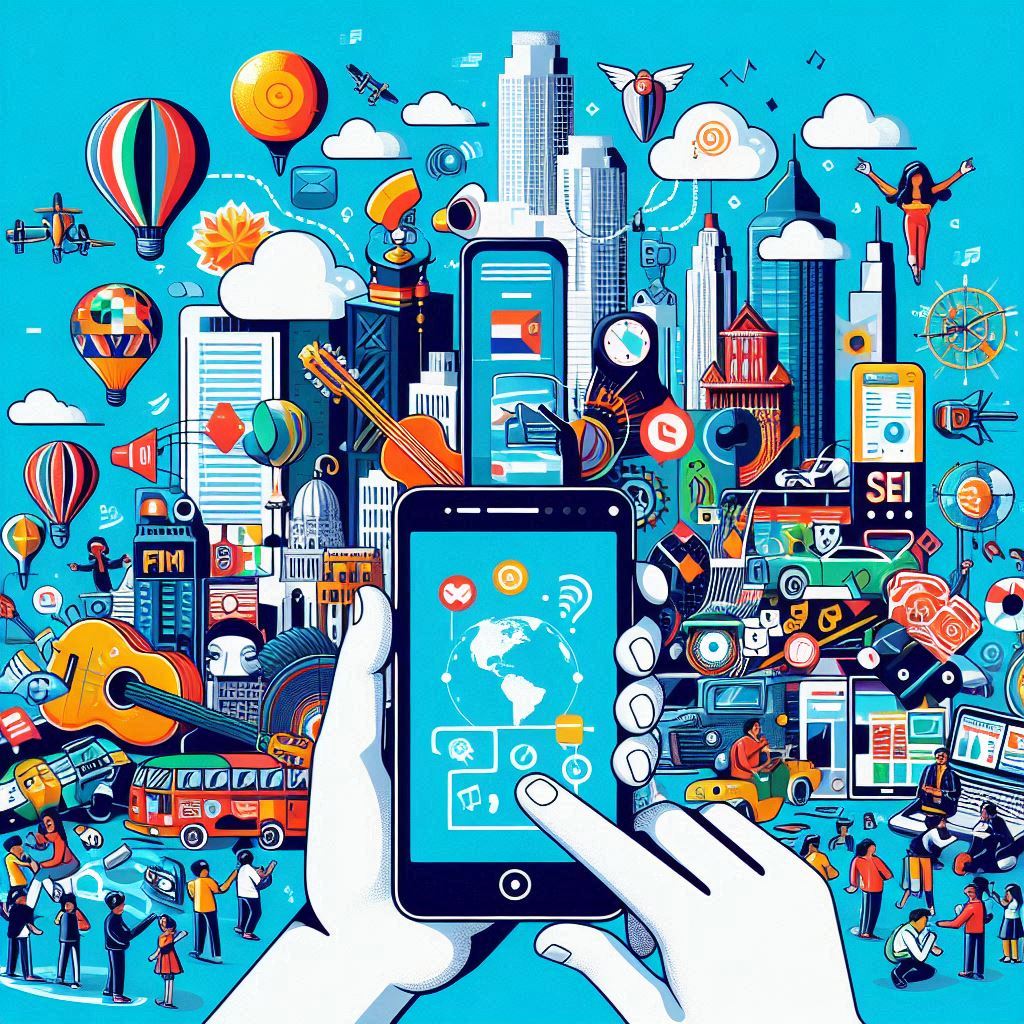The Evolution of Mobile Content in Latin America: From SMS to Streaming and Beyond
By: Ramzy Khalek, Director and Founder Hypermobile
 Over the past two decades, the mobile content industry in Latin America has undergone a fascinating journey of innovation and transformation. From simple text messages to complex streaming platforms and mobile applications, the region has witnessed a digital revolution driven by creativity, consumer needs, and the massive adoption of new technologies.
Over the past two decades, the mobile content industry in Latin America has undergone a fascinating journey of innovation and transformation. From simple text messages to complex streaming platforms and mobile applications, the region has witnessed a digital revolution driven by creativity, consumer needs, and the massive adoption of new technologies.
Throughout this journey, companies like Hypermobile played a pioneering role, leading key developments that shaped the current mobile content landscape. Below, we explore this historical evolution, from its beginnings with SMS to the sophisticated platforms that are now part of our daily lives.
The Beginning with SMS: Communication and Value-Added Services In the early years of mobile telephony, Short Message Service (SMS) was at the heart of digital communication. Operators and companies saw this technology as an opportunity to offer content and value-added services:
Services via SMS: Users could send alphanumeric codes to short numbers to receive content such as jokes, horoscopes, news alerts, and more. These services represented the first direct interaction between users and brands through mobile devices.
Contests and promotions: Premium SMS platforms enabled large-scale contests and promotions. One example was the campaign developed by Hypermobile in 2007, where users could participate in contests like “Win a new car every day for 30 days.” This campaign generated revenues exceeding USD $2.6 million in just one month.
Interactive entertainment: Events like Latin American Idol allowed users to vote for their favorite artists via SMS, creating a model that combined mobile interaction with television entertainment.
WAP 2.5: The first mobile portals and multimedia downloads as mobile technology evolved, devices began offering basic browsing capabilities through the WAP 2.5 protocol. This advancement provided access to content portals managed by mobile operators:
Downloading Images and Ringtones:
WAP portals offered catalogs where users could download personalized images for wallpapers and ringtones, including the popular “true tones” that replicated hit songs.
Content Management by Operators: In partnership with Movistar, Hypermobile implemented over 50 content stores across 12 countries in Latin America, generating significant revenue through single downloads and subscription models.
Subscription Model Innovation: During this period, Hypermobile introduced the “auto-renew” concept, where users paid monthly to access exclusive content such as images, ringtones, and mobile games. This model increased customer loyalty and established a recurring revenue base for operators.
Evolution Toward Video: Playback and Streaming With improvements in mobile device capabilities, users gained the ability to download and play short videos directly from WAP portals. However, the real transformation came with the introduction of video streaming:
Initial Download and Playback: Users could download small video clips, a significant advancement for mobile entertainment.
Hypermobile: Streaming pioneer: In 2007, Hypermobile became the first company in Latin America to embrace video streaming, launching platforms that allowed users to access video content in real-time, even before operators offered unlimited data plans.
Impact on content consumption: Despite connectivity limitations, this innovation marked the beginning of an era where video would become the dominant format in digital consumption.
Content clubs and the “all you can eat” model As the demand for mobile content grew, content clubs emerged—a revolutionary model offering unlimited access to a wide range of services for a fixed monthly fee:
Unlimited Access: Users could enjoy images, ringtones, games, and videos without restrictions, democratizing access to mobile content.
Success Story: In Mexico, Hypermobile implemented a content club for Movistar, generating revenues exceeding USD $1.2 million per month, solidifying this model as one of the industry’s most profitable.
The end of an era and the rise of apps The advent of smartphones marked the decline of WAP portals and content clubs, paving the way for a completely new ecosystem:
Marketplaces and Applications: With the introduction of stores like Google Play and Apple App Store, users began downloading advanced applications that offered richer and more personalized experiences.
Advanced connectivity: The implementation of 3G, 4G, and later 5G networks enabled the development of streaming applications, social networks, and real-time services, redefining mobile content.

Conclusion: An unprecedented transformation The evolution of mobile content in Latin America reflects a process of constant adaptation to emerging technologies and changing consumer demands. From the days of SMS to today’s sophisticated applications, each stage has been marked by innovation, leadership, and creativity.
Hypermobile, along with Net people, played a fundamental role in this transformation, leading the way toward new forms of digital consumption and setting standards that continue to inspire the industry. As we look to the future, mobile content will remain a driving force in the digital lives of users in Latin America and beyond.

